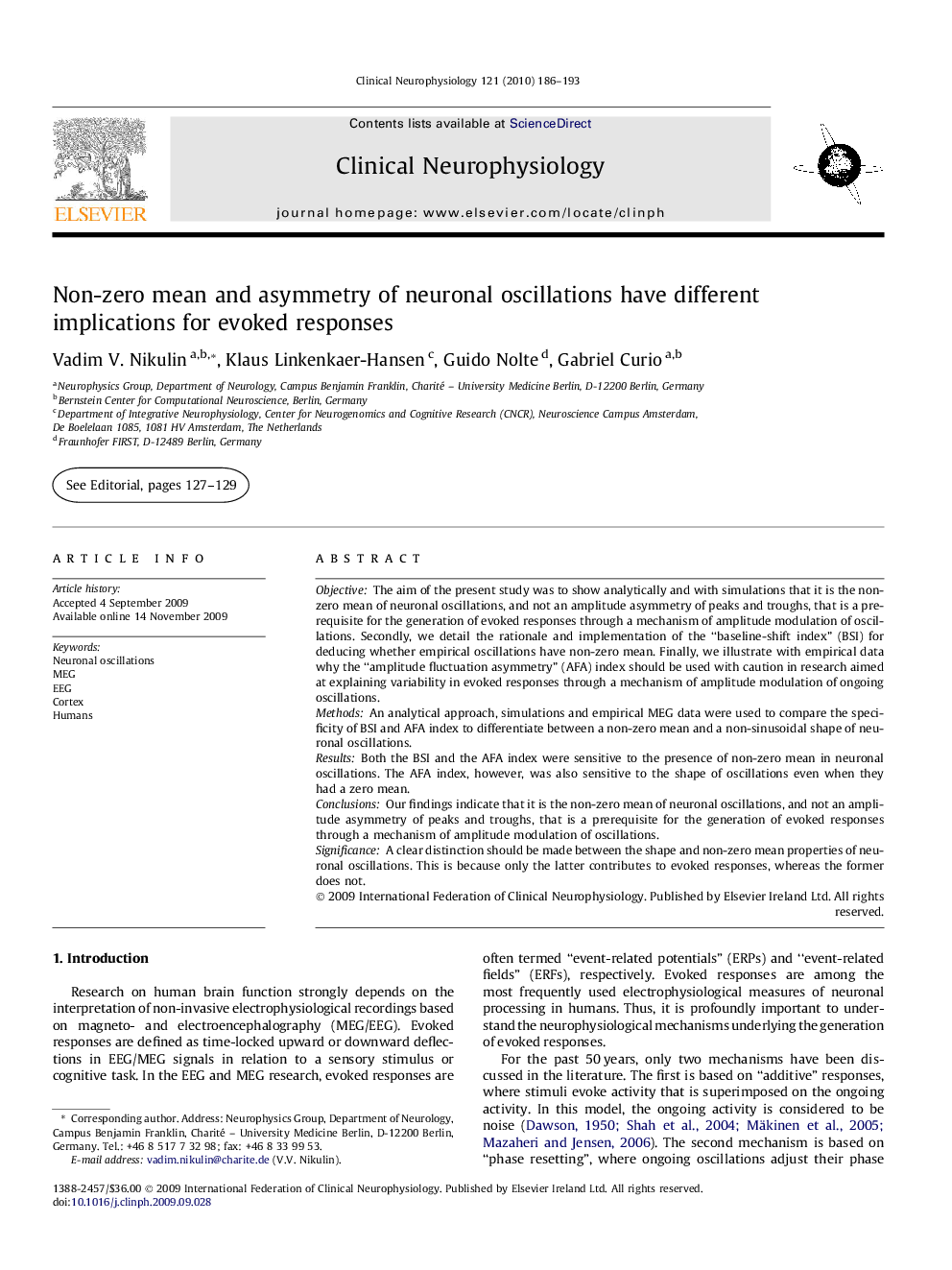| Article ID | Journal | Published Year | Pages | File Type |
|---|---|---|---|---|
| 3045320 | Clinical Neurophysiology | 2010 | 8 Pages |
ObjectiveThe aim of the present study was to show analytically and with simulations that it is the non-zero mean of neuronal oscillations, and not an amplitude asymmetry of peaks and troughs, that is a prerequisite for the generation of evoked responses through a mechanism of amplitude modulation of oscillations. Secondly, we detail the rationale and implementation of the “baseline-shift index” (BSI) for deducing whether empirical oscillations have non-zero mean. Finally, we illustrate with empirical data why the “amplitude fluctuation asymmetry” (AFA) index should be used with caution in research aimed at explaining variability in evoked responses through a mechanism of amplitude modulation of ongoing oscillations.MethodsAn analytical approach, simulations and empirical MEG data were used to compare the specificity of BSI and AFA index to differentiate between a non-zero mean and a non-sinusoidal shape of neuronal oscillations.ResultsBoth the BSI and the AFA index were sensitive to the presence of non-zero mean in neuronal oscillations. The AFA index, however, was also sensitive to the shape of oscillations even when they had a zero mean.ConclusionsOur findings indicate that it is the non-zero mean of neuronal oscillations, and not an amplitude asymmetry of peaks and troughs, that is a prerequisite for the generation of evoked responses through a mechanism of amplitude modulation of oscillations.SignificanceA clear distinction should be made between the shape and non-zero mean properties of neuronal oscillations. This is because only the latter contributes to evoked responses, whereas the former does not.
